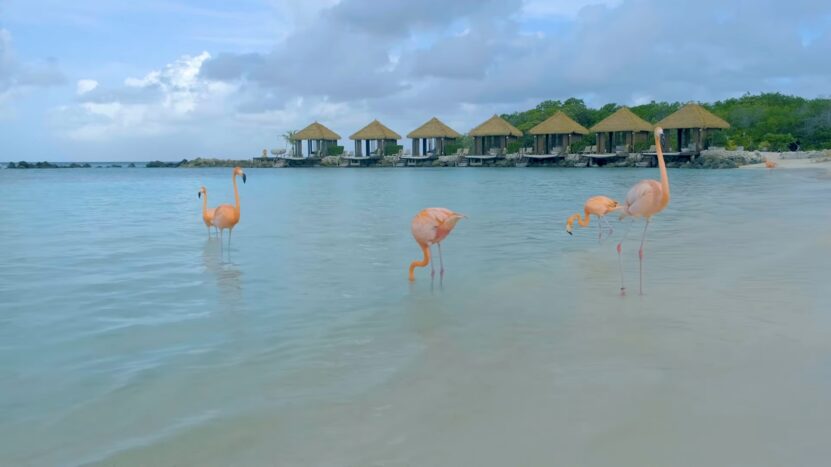Aruba, a popular destination in the Caribbean, boasts numerous fascinating facts that pique the interest of both first-time visitors and seasoned travelers alike. Despite being a well-traveled region, Aruba still manages to maintain an air of mystery and enigma that many people have yet to explore. Delving into the most captivating aspects of Aruba’s history, culture, and natural beauty can provide a fresh perspective on this beloved island getaway.
History is rich and multifaceted, with influences from the Arawak people, the Spanish, and the Dutch, which have all left their mark on the island’s culture, language, and architecture. The island’s official languages, Papiamento and Dutch, reflect this diverse heritage, and English and Spanish are widely spoken as well.
its unique geography and climate also make it stand out from other Caribbean destinations. Located outside the hurricane belt, the island enjoys a relatively dry and sunny climate year-round, with constant trade winds that keep the temperature pleasant. This climate supports an array of flora and fauna, including the iconic Divi-Divi trees and the Arikok National Park, home to various endemic species.
The top 10 most interesting Aruba facts are listed below:
Exploring the Diverse Regions of Aruba: A Multifaceted Island Experience
Aruba’s diverse landscape is divided into several distinct sections, each offering a unique experience for travelers. These areas include Oranjestad, Palm Beach, Noord, Eagle Beach, Santa Cruz, San Nicholas, and Arikok National Park. With such an extensive array of attractions and activities, Aruba caters to a wide range of preferences, ensuring that visitors will find something to suit their tastes and sense of adventure. Beyond its picturesque beaches, Aruba is also home to natural wonders and renowned landmarks that add depth to the island’s appeal.
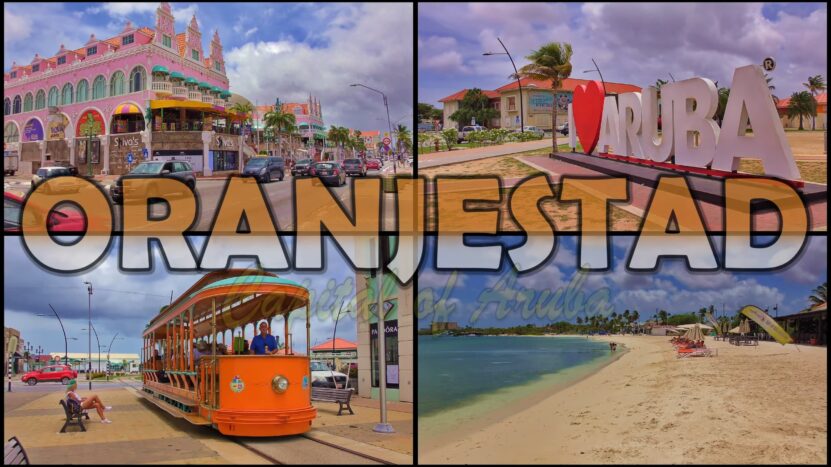
- Oranjestad: As the capital city of Aruba, Oranjestad is a vibrant, bustling hub steeped in history and culture. The city’s colorful Dutch colonial architecture, lively shopping districts, and fascinating museums make it an essential destination for anyone interested in immersing themselves in Aruba’s rich heritage.
- Palm Beach: Known for its luxurious resorts, upscale dining, and exciting nightlife, Palm Beach is the perfect spot for those seeking a touch of glamour during their stay. The beach itself is an idyllic stretch of soft sand and clear water, ideal for swimming, sunbathing, or taking part in water sports.
- Noord: This charming residential area offers visitors a more authentic, local experience. Noord is home to several picturesque churches, including the iconic Alto Vista Chapel, as well as a variety of excellent restaurants and cafes that showcase the island’s diverse culinary scene.
- Eagle Beach: Widely regarded as one of the world’s most beautiful beaches, Eagle Beach is a must-visit location for beach enthusiasts. Its pristine white sand, turquoise waters, and iconic Divi-Divi trees create a postcard-perfect setting for relaxation and enjoyment.
- Santa Cruz: Nestled in the heart of the island, Santa Cruz offers a serene escape from the bustling tourist areas. Surrounded by lush hills and rugged landscapes, visitors can explore the island’s natural beauty, discover hidden gems like the Casibari Rock Formation, or engage in outdoor adventures such as hiking and mountain biking.
- San Nicholas: Often referred to as the “Sunrise City,” San Nicholas is known for its vibrant street art, lively music scene, and cultural events. This area is perfect for visitors looking to experience the more artistic side of Aruba and immerse themselves in the island’s creative spirit.
- Arikok National Park: Covering nearly 20% of the island, Arikok National Park is a nature lover’s paradise. The park is home to diverse flora and fauna, unique geological formations, and stunning natural attractions such as the Natural Pool, Fontein Cave, and Boca Prins. Hiking, birdwatching, and guided tours are just a few of the activities available in this breathtaking natural reserve.
A Culinary Adventure in Oranjestad: Savoring the Flavors of Aruba’s Capital
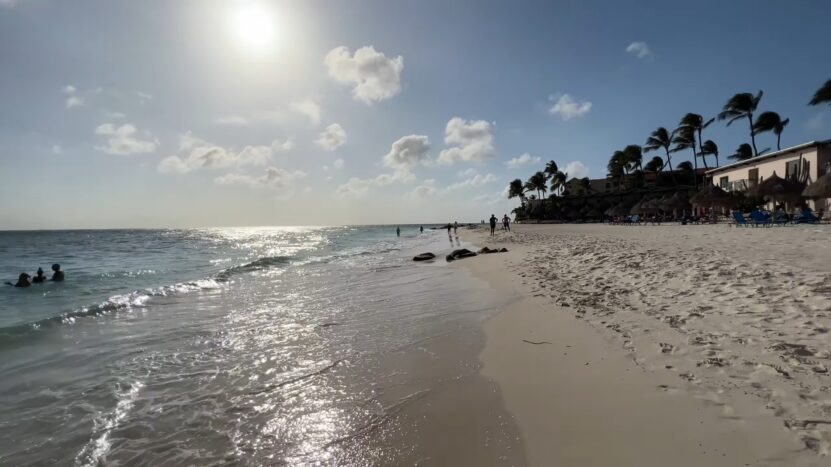
The vibrant capital city of Aruba, Oranjestad, is a treasure trove for food enthusiasts, boasting over 72 diverse eateries that cater to a wide range of culinary preferences. The city’s dining scene is a testament to the Caribbean’s rich cultural tapestry, with flavors reflecting influences from Latin America, France, and North America.
As the most popular and highly recommended destination for dining in Aruba, Oranjestad offers a culinary journey that spans the globe. From mouthwatering seafood dishes and traditional Caribbean fare to sophisticated French cuisine and comforting North American favorites, there’s something to satisfy every palate.
Many of the restaurants in Oranjestad are located along the bustling waterfront, offering diners not only delicious meals but also stunning views of the harbor and the surrounding landscape. Visitors can choose from an assortment of dining experiences, whether they’re seeking a romantic dinner for two, a lively family meal, or a relaxed beachfront lunch.
A Glimpse into Turbulent History: From Indigenous Beginnings to European Influence
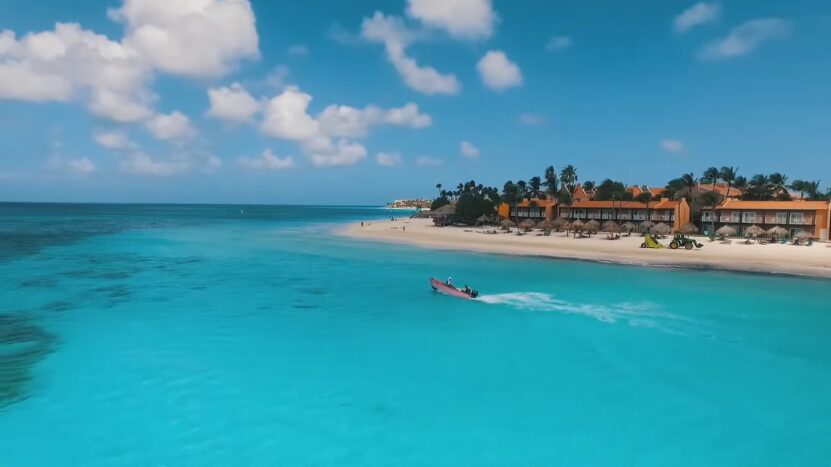
One of the captivating aspects of Aruba is its storied history, marked by constant change and upheaval until it gained autonomy in 1976. The island’s past is a tapestry of diverse influences, from its original inhabitants, the Caquetio Indians, to the arrival of Spanish explorers and Dutch colonizers.
The Caquetio Indians were the first inhabitants of Aruba, settling on the island around 2500 BC and thriving until 1000 AD. Their legacy can still be seen in the form of ancient rock paintings and artifacts that provide a glimpse into their way of life.
In 1499, Spanish explorer Alonso de Ojeda discovered Aruba and set his sights on subjugating its indigenous population. The Spanish rule over the island was marked by the enslavement of the Caquetio people, who were forcibly transported to work on plantations in Hispaniola. However, the Spanish presence on the island was relatively short-lived, as the Dutch arrived in 1636 and initiated a conflict that lasted for 80 years.
The Dutch eventually gained control of Aruba, and their influence is still evident in many aspects of the island’s culture, language, and architecture. Aruba remained under Dutch rule until it obtained autonomy within the Kingdom of the Netherlands in 1976.
Embracing Diversity: Aruba’s Melting Pot of Cultures and Traditions
Aruba’s turbulent history has led to a remarkably diverse population, with over 80 distinct nationalities represented on the island. This rich cultural tapestry has left its mark on various aspects of Aruban life, from architecture and art to music and traditional celebrations. The influence of these different cultures can be seen and experienced throughout the island, making Aruba a fascinating and vibrant destination.
The architectural design of Aruba’s hotels, for example, showcases a blend of styles reflecting the island’s diverse heritage. Visitors can find Dutch colonial buildings adorned with vibrant Caribbean colors, modern resorts with international flair, and charming local guesthouses that exude a unique Aruban charm.
Aruba’s music scene is another testament to its diverse population, with genres ranging from traditional folk music and Caribbean rhythms like soca and calypso to international styles like pop, jazz, and Latin music. The island’s local art also draws inspiration from its multicultural background, with artists incorporating various techniques and themes to create a unique Aruban aesthetic.
A Small Island with a Big Appeal: Aruba’s Draw for North American Tourists

Despite its modest size of just 74.52 square miles, Aruba has become a popular tourist destination, attracting over 800,000 visitors annually. What sets Aruba apart is the demographic of its tourists: a staggering 90% of them come from North America. This unique fact highlights the strong connection between Aruba and North American travelers, who are drawn to the island for various reasons.
One of the main factors contributing to Aruba’s popularity among North American tourists is its proximity to the continent, making it an accessible and convenient getaway. With numerous direct flights from major cities in the United States and Canada, Aruba is an ideal choice for a quick Caribbean vacation without the long travel times.
The island’s consistent sunny weather and warm climate are also a major draw for North American visitors, particularly those seeking a respite from harsh winters. Aruba’s location outside the hurricane belt ensures a relatively stable and pleasant climate year-round, providing an attractive destination for sun-seekers.
The Esteemed Role of Aruba Travel Guides: Upholding the Island’s Hospitality Traditions
In Aruba, the role of a travel guide is highly regarded, and those who hold this position are respected for their expertise and dedication to providing exceptional service. The rigorous training they undergo is a testament to the value placed on hospitality in Aruba, ensuring that every visitor receives the warm welcome and care that the island is known for.
Travel guides in Aruba must learn and uphold traditional hospitality principles that date back to the island’s original inhabitants. One of the key tenets is the island’s motto, “Take Care of Our Tourists.” This philosophy underscores the importance of ensuring that every visitor feels welcomed, valued, and well-cared for during their stay.
To become an Aruba travel guide, individuals must undergo extensive training that covers various aspects of the island’s culture, history, and attractions. They must also develop excellent communication and interpersonal skills, enabling them to effectively connect with tourists from diverse backgrounds. Additionally, travel guides are expected to be well-versed in local customs, etiquette, and the island’s unique offerings, ensuring that they can provide insightful recommendations and create memorable experiences for their guests.
Emphasis on Education: Government Support for Bilingualism and Private Schooling
Education is highly valued in Aruba, with the island’s government playing a crucial role in ensuring that all children have access to quality schooling. In an effort to support the development of well-rounded, bilingual individuals, the government covers the full cost of private education for all children. This investment in education reflects the importance placed on cultivating a knowledgeable and skilled population capable of contributing to the island’s growth and prosperity.
Bilingualism is a central component of Aruba’s education system, as children are not only taught in their native language but are also required to learn a second language during their primary school years. This emphasis on language education equips Aruban students with the ability to communicate effectively with people from diverse backgrounds, promoting cultural understanding and facilitating international exchange.
The choice of a second language is typically based on the individual needs and interests of the students, with options such as English, Dutch, and Spanish commonly available. By offering a variety of language options, the education system in Aruba fosters an inclusive learning environment that encourages students to broaden their horizons and develop a global perspective.
Ease of Transportation: Accessible Roads and Reliable Services for Tourists
One of the factors that make Aruba an attractive destination for tourists is the ease of transportation on the island. All roads in Aruba are accessible by land vehicles, ensuring that visitors can conveniently explore the island’s various attractions without any hassle. The availability of public buses and taxi cabs with set prices helps instill confidence among tourists who do not have access to a personal vehicle, eliminating concerns about being overcharged or taken advantage of.
In addition to buses and taxis, Aruba offers a diverse range of transportation options for those who prefer a more adventurous mode of travel. All-terrain vehicles, jeeps, scooters, and motorcycles are available for rent, allowing visitors to explore the island’s unique landscapes and off-the-beaten-path locations at their own pace. These alternative transportation options cater to different preferences and needs, making it easy for tourists to navigate the island and create their own memorable experiences.
Aruba’s well-developed transportation infrastructure and varied options for getting around contribute to the island’s appeal as a tourist destination. Visitors can rest assured that they can easily access all the island has to offer, from pristine beaches and historical sites to natural wonders and local attractions. The accessibility and reliability of transportation in Aruba enhance the overall travel experience, further solidifying the island’s reputation as a top Caribbean destination.
Contrasting Coasts: Aruba’s Distinct Beach Experiences for Visitors
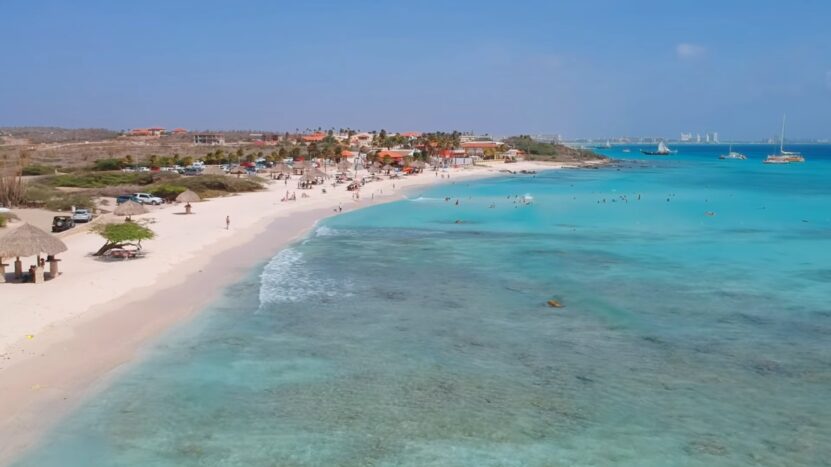
Aruba is blessed with two distinct coastlines, each offering a unique beach experience for visitors. The west coast, with its miles of pristine beaches, is ideal for swimming and engaging in various water activities. In contrast, the windward coast features more undeveloped beaches, characterized by powerful waves and a strong undertow, making them less suitable for water activities and swimming.
The west coast beaches are popular among tourists for their calm waters, soft sands, and a wide range of water sports opportunities. Visitors can enjoy activities such as snorkeling, scuba diving, paddleboarding, and jet-skiing, among others. These beaches also provide the perfect setting for relaxation, sunbathing, and leisurely strolls along the shoreline.
On the other hand, the windward coast offers a more rugged and adventurous experience. While swimming and water activities are discouraged due to the strong currents and powerful waves, these beaches are perfect for those seeking a more remote and untouched environment. The dramatic landscapes, coupled with the raw beauty of the windward coast, make it an ideal destination for nature lovers, hikers, and photographers.
A Safe Haven: Remarkable Record of Avoiding Tropical Storms and Hurricanes
Among the Caribbean islands, Aruba boasts an impressive history of evading damaging tropical storms and hurricanes. In fact, since 1877, only a handful – around six – have come within 62 miles or closer to the island. This fortunate circumstance helps maintain the island’s natural beauty and keeps residents and visitors safe from calamity and destruction.
Aruba’s location outside the hurricane belt contributes significantly to its low risk of being affected by severe storms. This geographic advantage makes it an attractive destination for tourists, particularly during the hurricane season, when other Caribbean islands might face adverse weather conditions. Visitors to Aruba can enjoy their vacation with peace of mind, knowing that the island has a track record of safety from devastating tropical storms and hurricanes.
This fortunate weather pattern not only benefits tourists but also plays a crucial role in the lives of the island’s residents. With fewer storms and hurricanes threatening the island, Aruba can maintain its infrastructure, natural beauty, and thriving tourism industry without facing the potential devastation that such events can bring.
If you’re inspired to embark on a Caribbean adventure, consider exploring our comprehensive review of the 3-day cruises from Galveston in 2023 to kick off your journey to Aruba and beyond.
FAQ
What is the best time to visit ?
The best time to visit Aruba is from April to August when the weather is pleasant, and the island is less crowded. During this period, hotel rates are typically lower, and visitors can take advantage of off-peak season discounts. However, Aruba enjoys consistently warm temperatures and sunny skies throughout the year, making it a great destination for a vacation at any time.
What language do Arubans speak?
Arubans are multilingual, with the official languages being Dutch and Papiamento, a local creole language. However, most Arubans also speak English and Spanish, making it easy for tourists from various countries to communicate with locals and navigate the island.
What currency is used in Aruba?
The official currency of Aruba is the Aruban Florin (AWG). However, US dollars are widely accepted throughout the island, and most establishments accept major credit cards. It’s advisable to carry some cash in the local currency for small purchases and tipping.
What are some must-see attractions in Aruba?
Aruba offers a wide range of attractions for visitors, including stunning beaches like Eagle Beach and Palm Beach, historical sites such as the California Lighthouse and Fort Zoutman, and natural wonders like the Natural Pool and Arikok National Park. Additionally, Aruba is home to several museums, art galleries, and cultural events that showcase the island’s rich history and diverse heritage.
Is safe for tourists?
Aruba is considered one of the safest destinations in the Caribbean, with low crime rates and a stable political environment. However, visitors should still exercise common-sense safety precautions, such as not leaving valuables unattended on the beach and being aware of their surroundings, especially when exploring remote areas or traveling at night.
What is the local cuisine like ?
Aruban cuisine is a delightful fusion of flavors from various cultures, including Dutch, African, Spanish, and indigenous influences. Popular local dishes include Keshi Yena (stuffed cheese), Pastechi (meat-filled pastry), and Aruban seafood specialties like the catch of the day prepared with creole sauces. Visitors can also enjoy international cuisine at numerous restaurants on the island, catering to diverse tastes and preferences.
Do I need a visa to visit Aruba?
Visa requirements for Aruba depend on your nationality and the duration of your stay. Citizens of the United States, Canada, the European Union, and several other countries can enter Aruba without a visa for stays of up to 30 days. It’s recommended to check the visa requirements for your specific country before planning your trip.
Conclusion
In conclusion, Aruba is a captivating Caribbean destination with its stunning beaches, rich history, diverse culture, and welcoming people. Its unique blend of attractions, safety, and stable weather make it an ideal vacation spot for travelers seeking a memorable tropical getaway. With its extensive range of activities and experiences, Aruba caters to a wide variety of interests, ensuring that every visitor can create lasting memories on this enchanting island. So whether you’re planning a romantic escape, a family vacation, or a solo adventure, Aruba promises an unforgettable experience that will leave you longing to return.

